Deploying vanilla files with GitHub Pages
Why GitHub Pages? Well, quality hosting is often not free. GitHub Pages offers a decent service free of charge.
What does “deploy” mean?
Developers job is to write file systems that interact with each other to build sites. During the development phase, they test their files on a simplified server on their home computer: the localhost.
But in real life, they need to make sure that everyone can use their files. This means putting them on a server that everyone can access. This can be accessed via a URL (a domain name).
Attempting to deploy a site yourself
The tedious job of getting servers up and running all over the world has been delegated to DevOps. So let’s change hats and take a look behind the scenes.
Preparation
Prerequisites : Git/GitHub 1
Create a repo on GitHub. You can leave it public or private.
The link to access the deployment will be public (but what’s the point?).
The deployment itself
- Go to
Settingstab

- In the
Code and automationcategory on the left, choosePages.
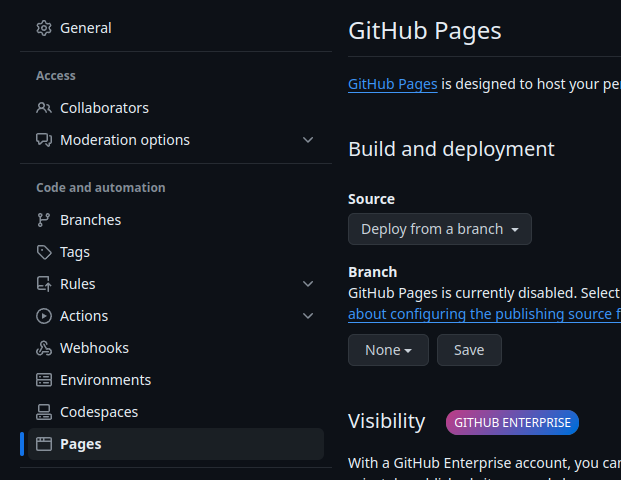
- Select the branch on which to launch automatic deployment (usually
main) and validate.
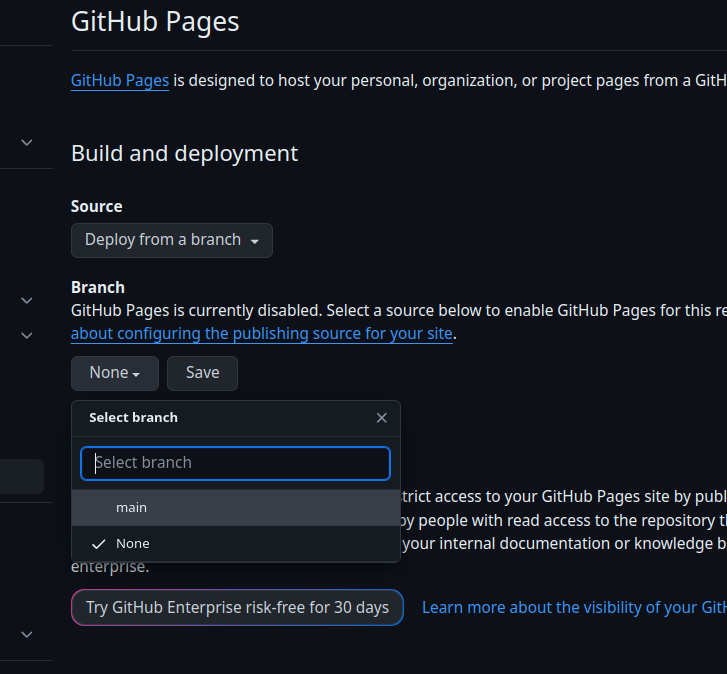

And the magic happened
GitHub will now launch a whole series of actions to build a site with the files it finds on your repo. Just go to the Actions tab to see it.
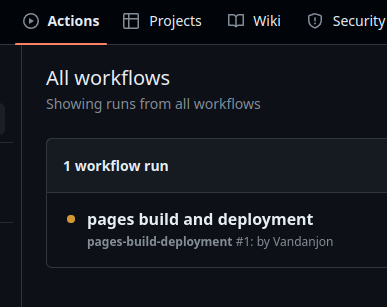
If you want to observe the actions in details, simply click on the current process.
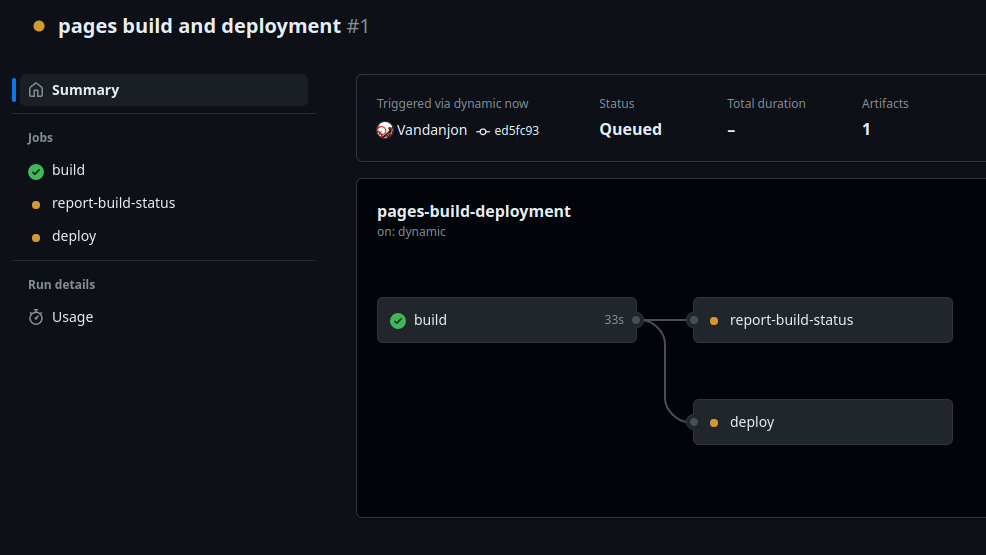
At the end of the automatic deployment process, GitHub Pages generates a link from which your site can be accessed.

To go further
To make life easier for everyone, you can customize the About section of your repo (on the right-hand side of the page).

Simply tick the Use your GitHub Pages website box, and the Website field will fill in automatically. Ain’t life grand?
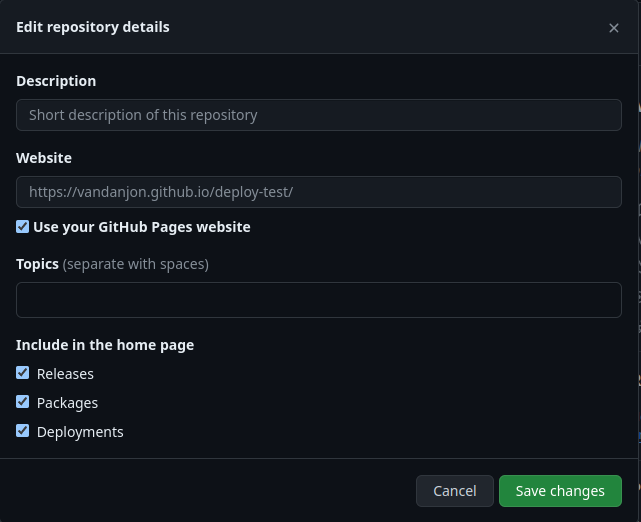
What’s even more interesting is that every time you perform a push on the branch connected to this deployment (main in our case), the site will automatically update itself. Thanks DevOps ❤️.